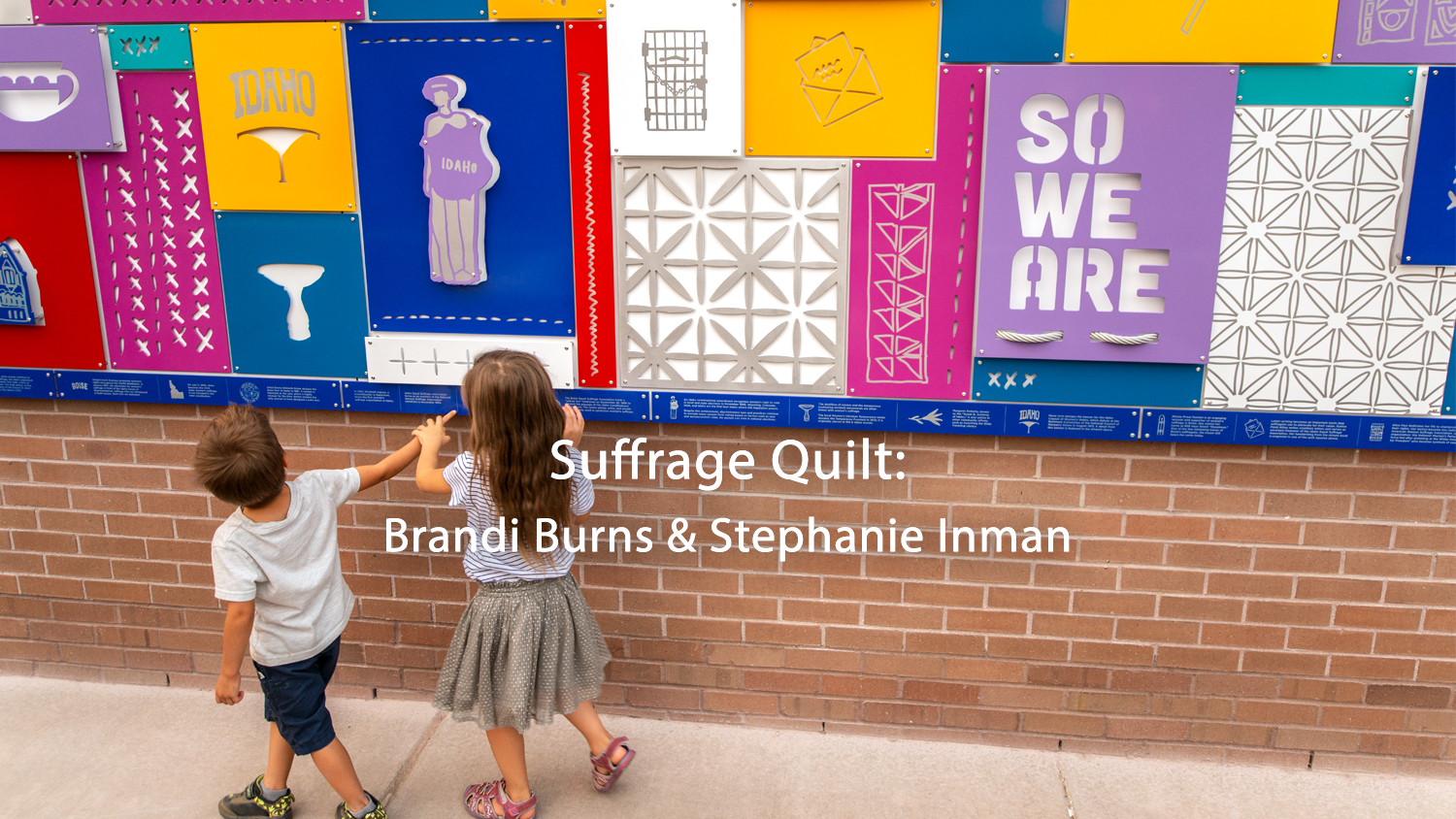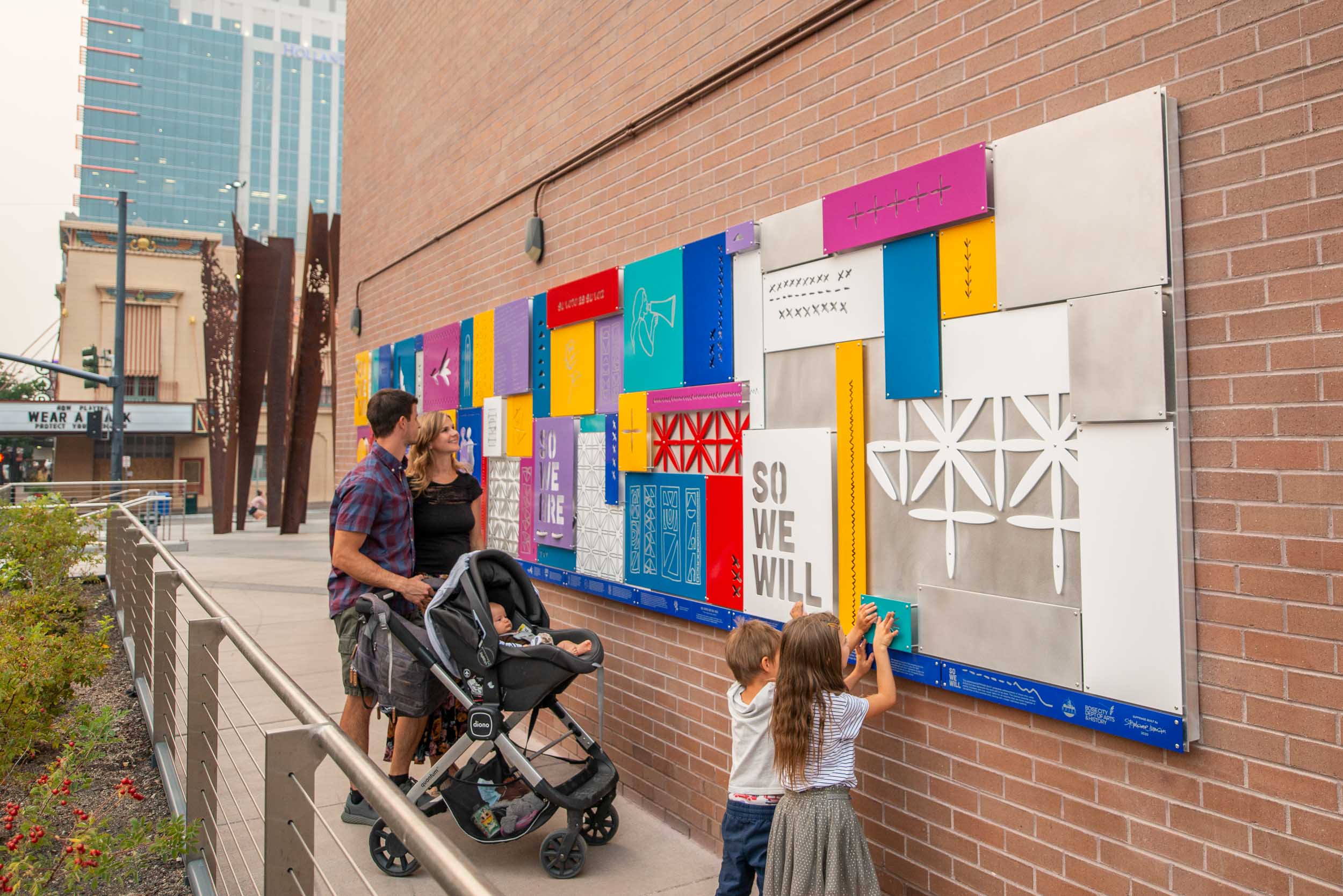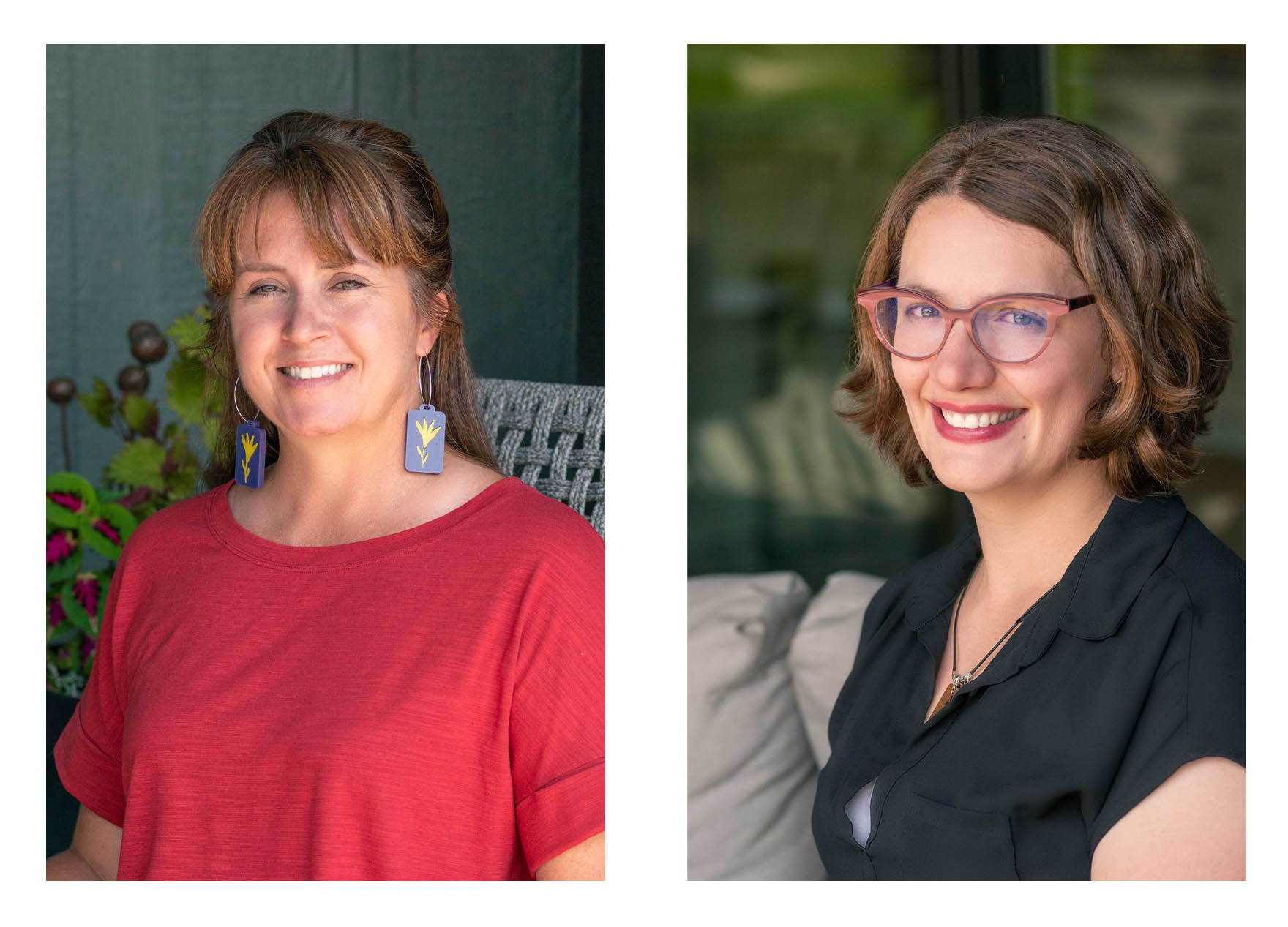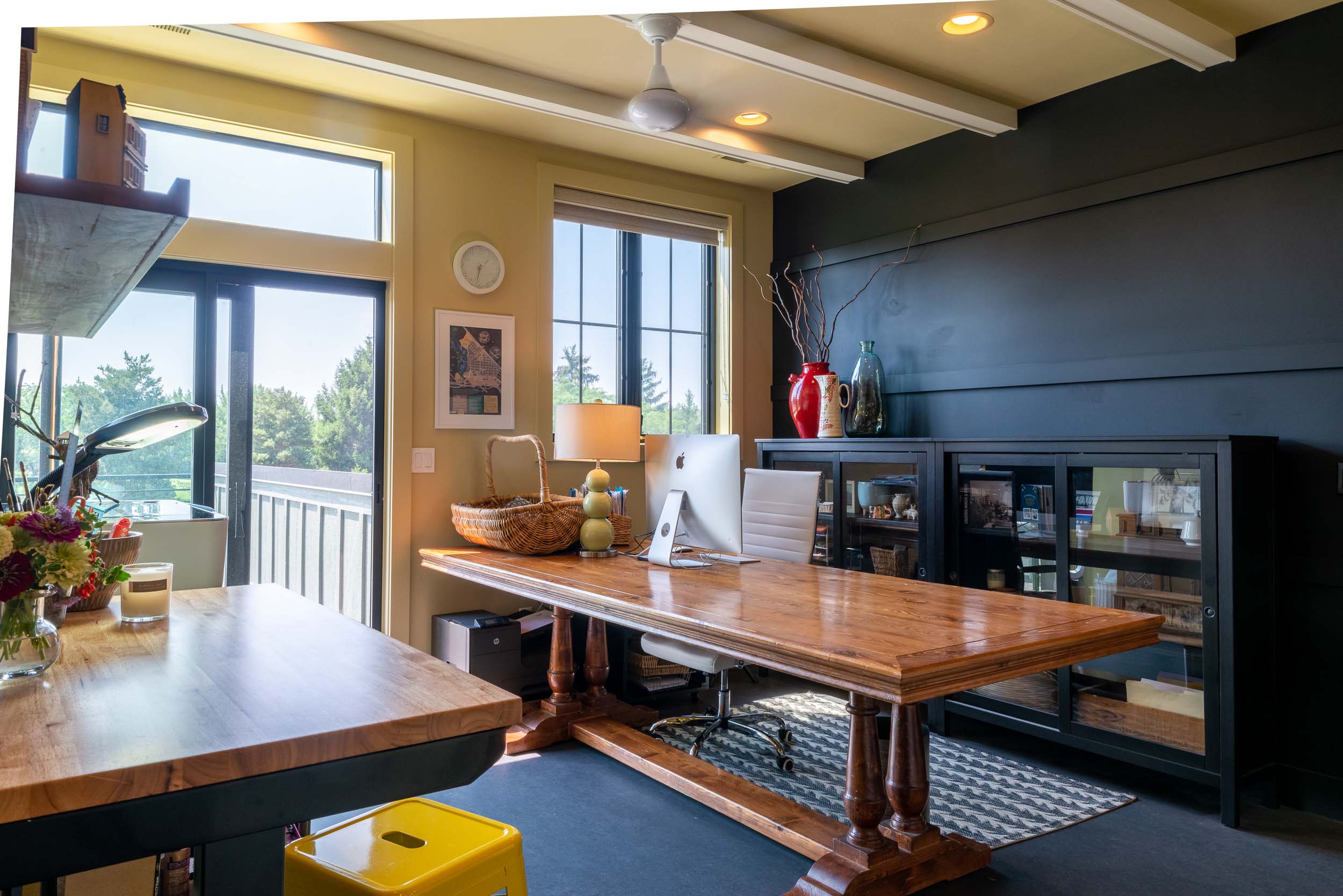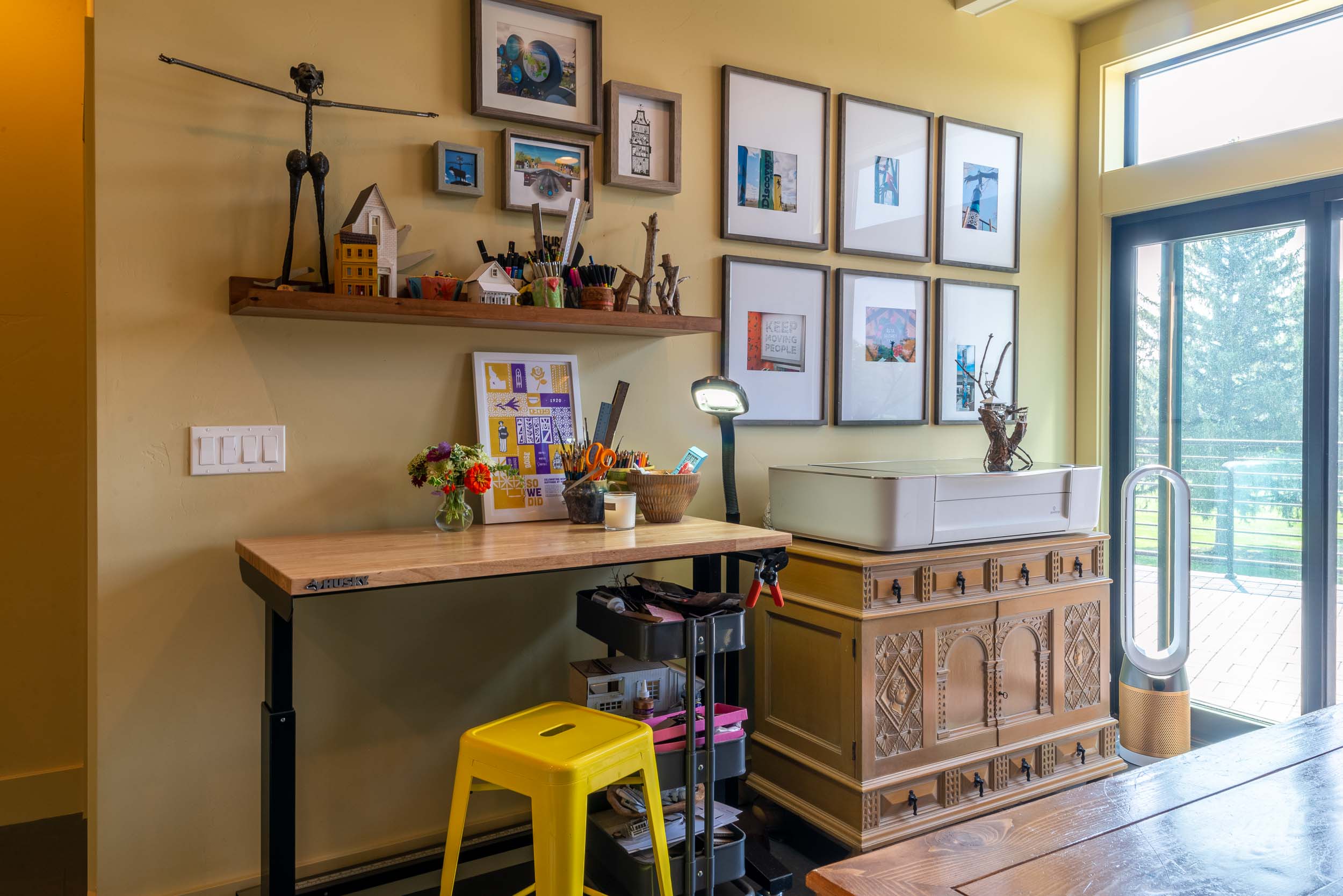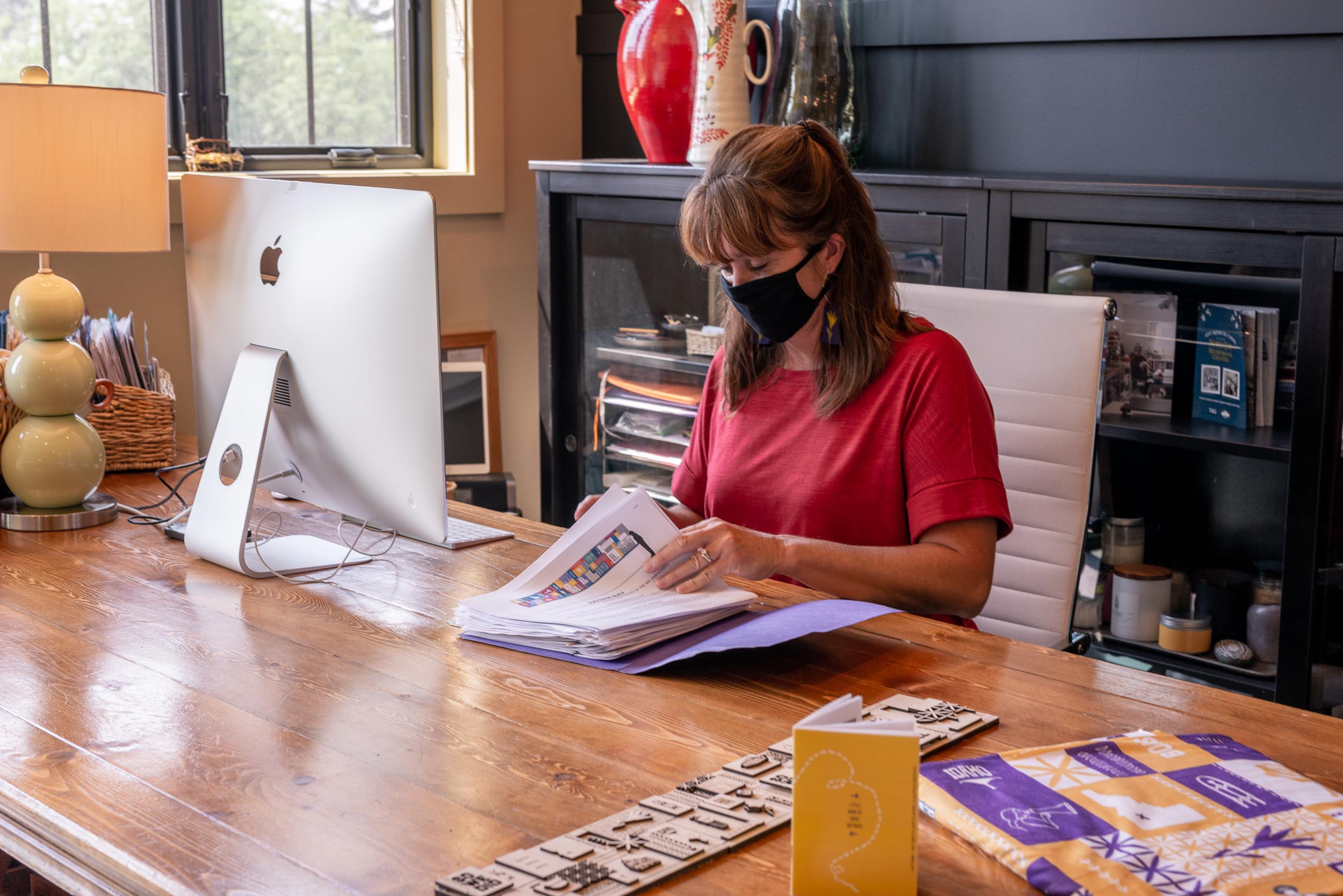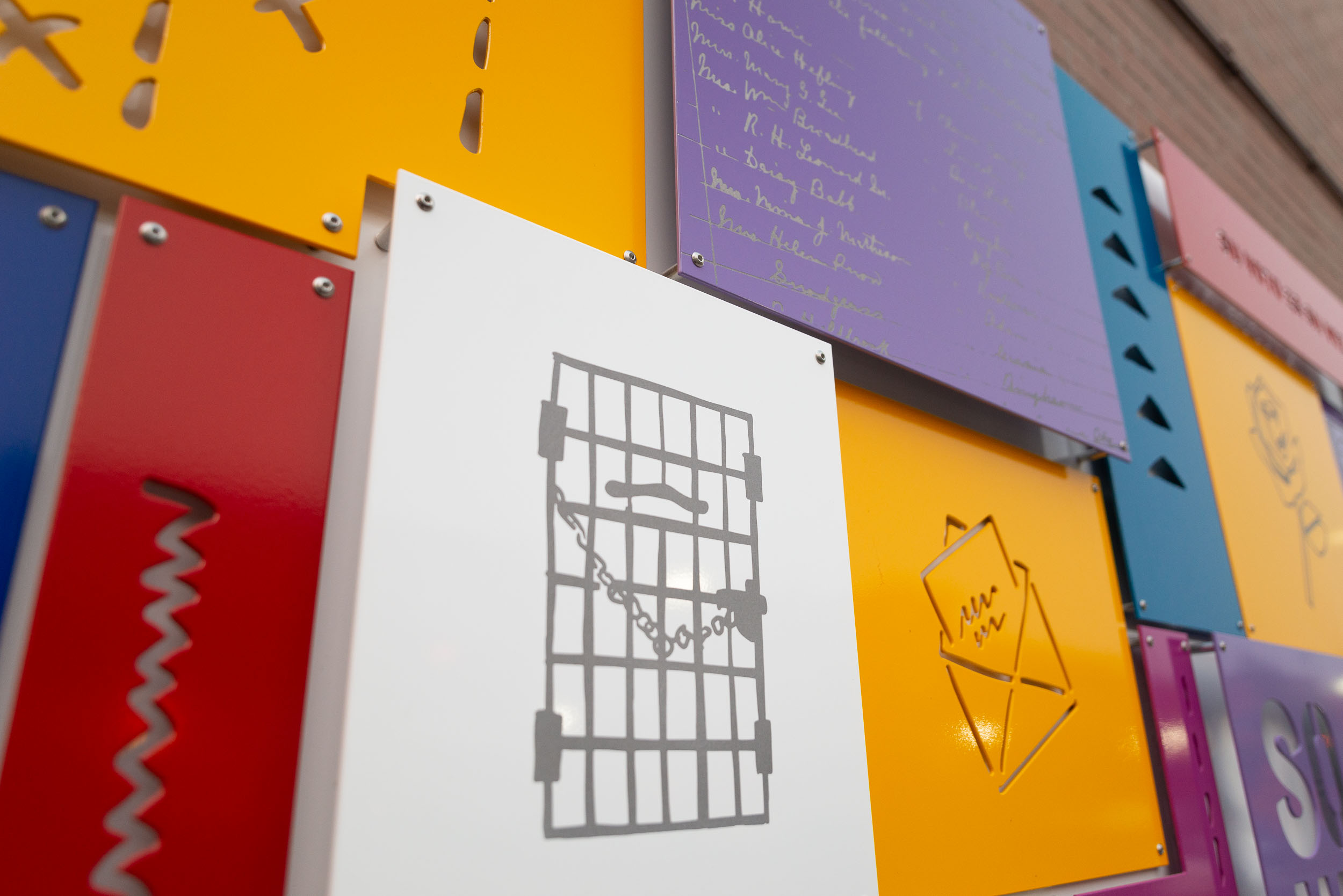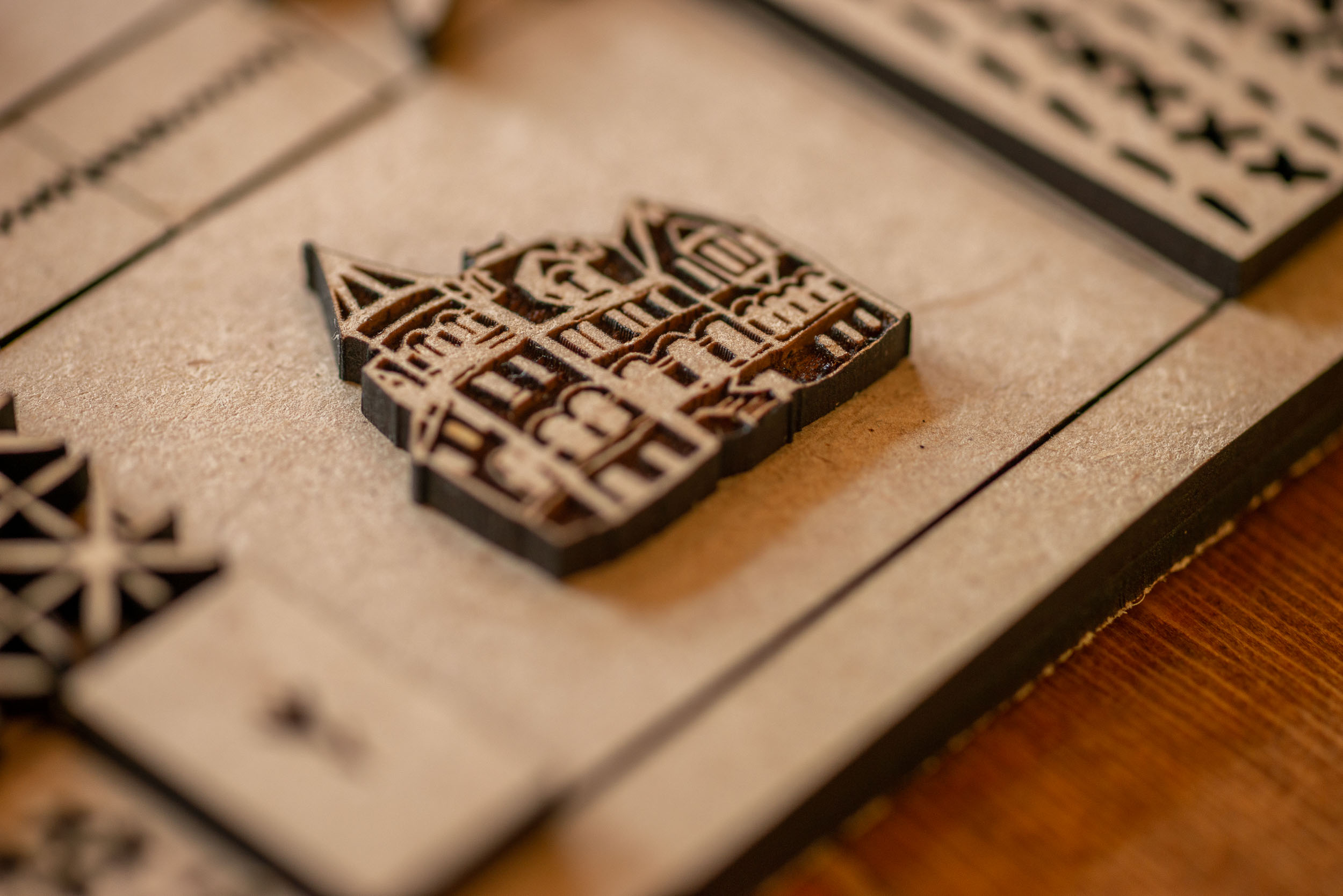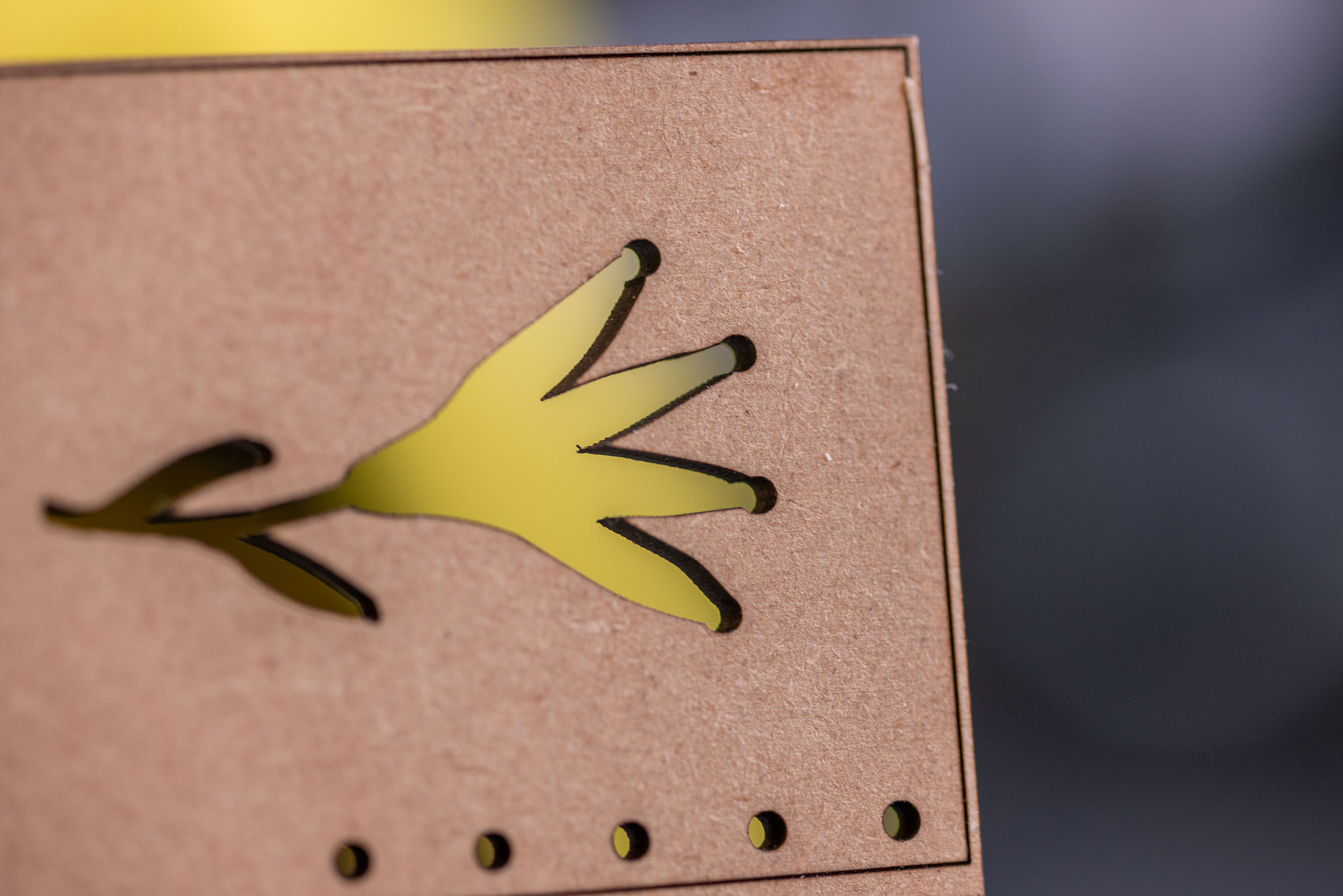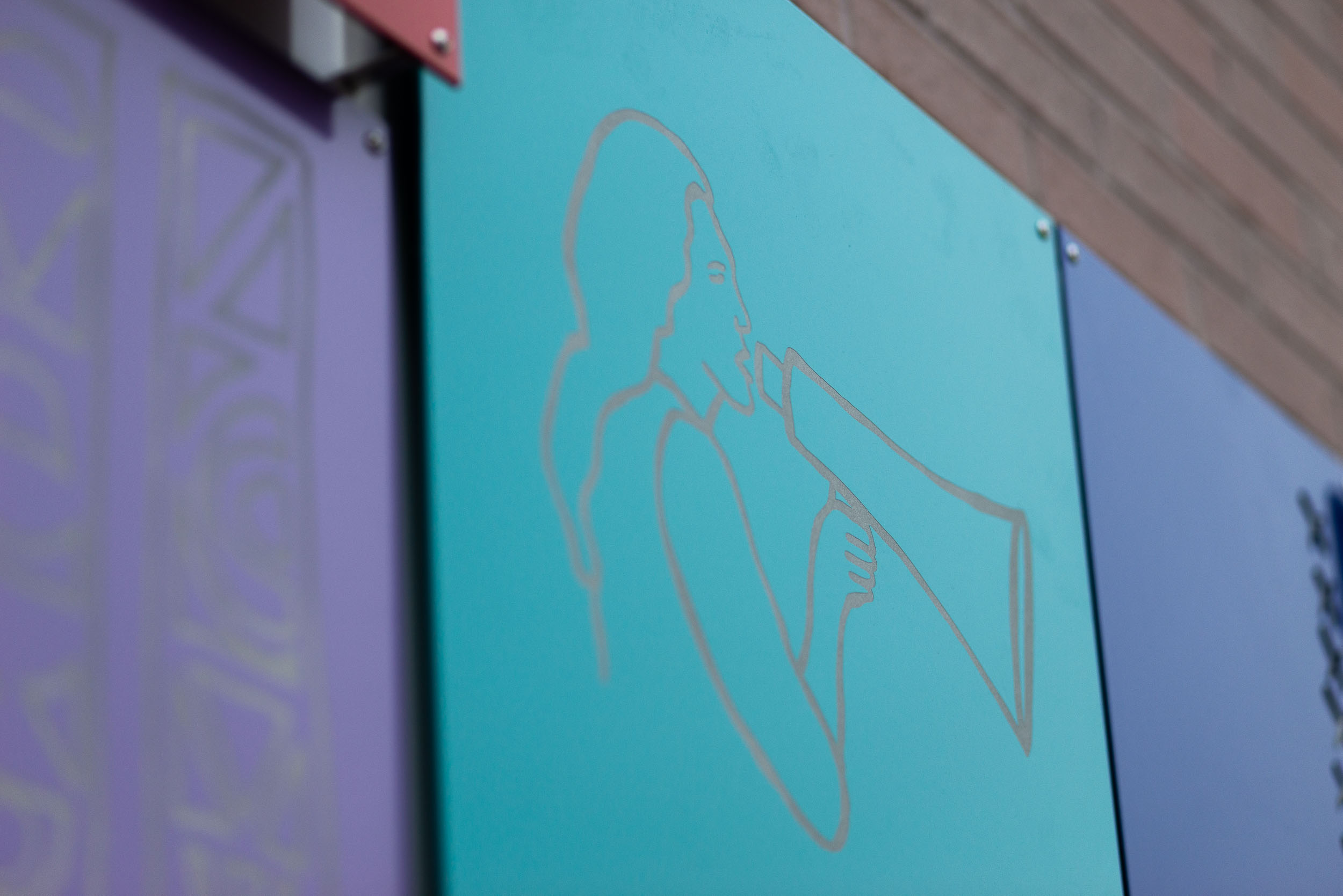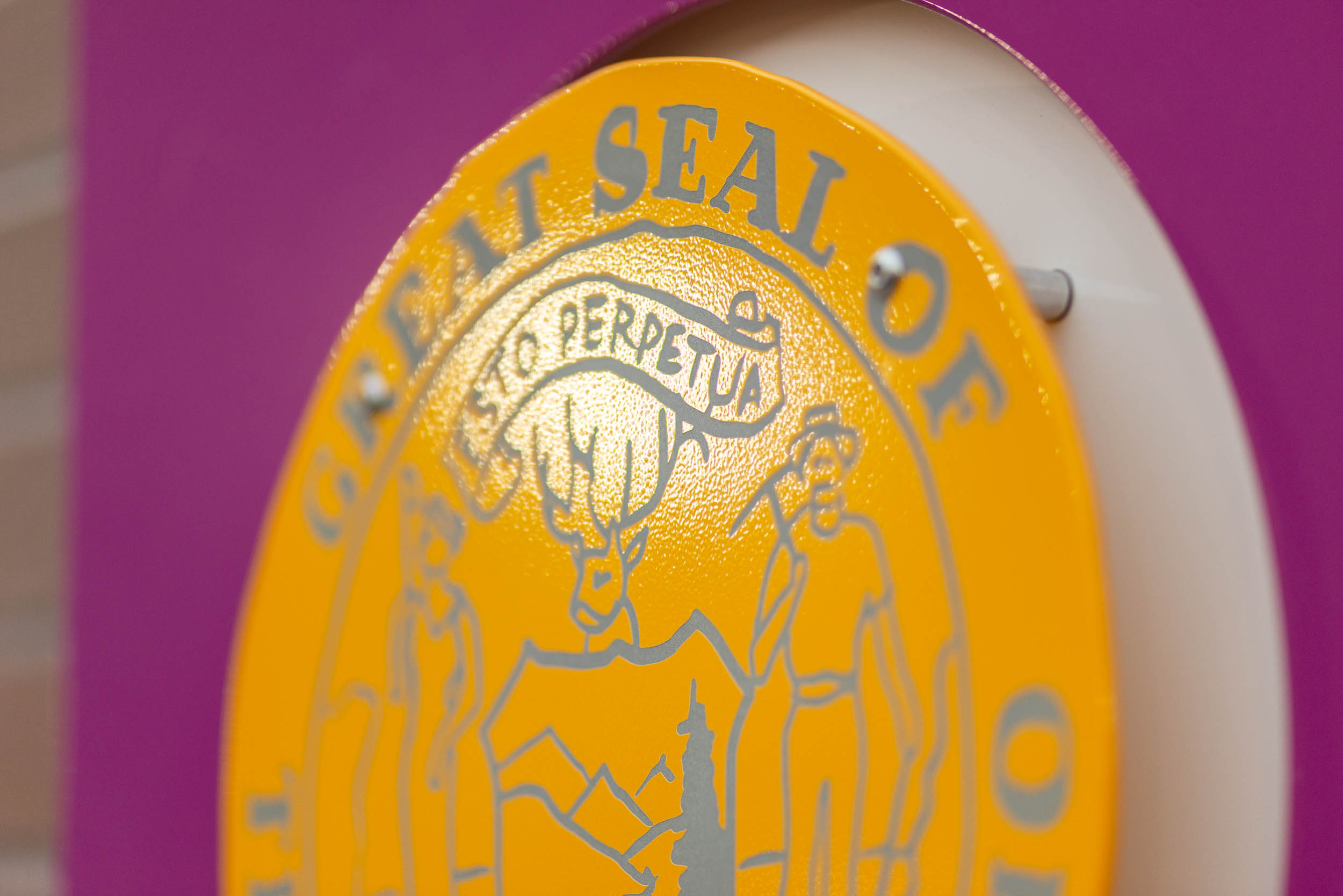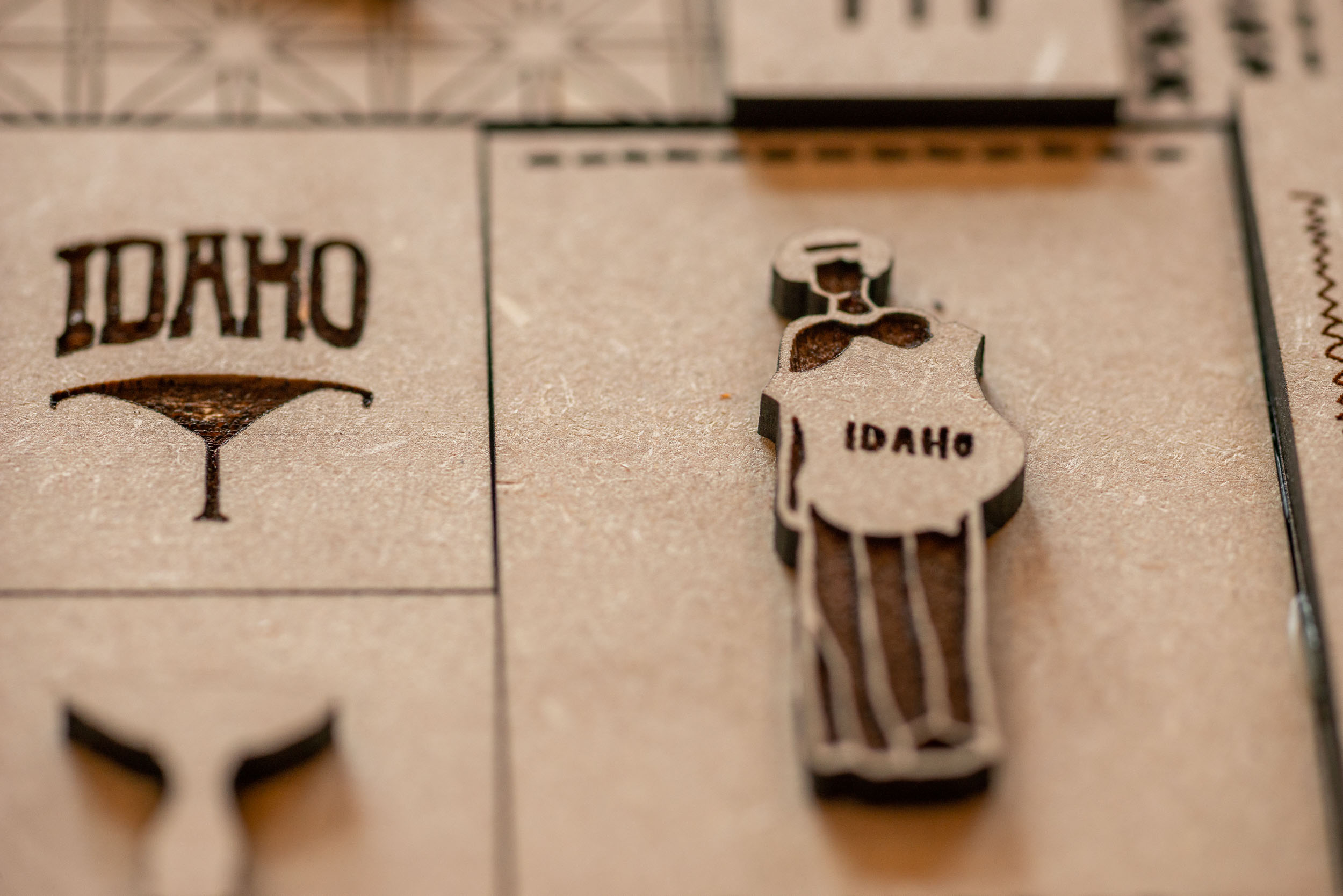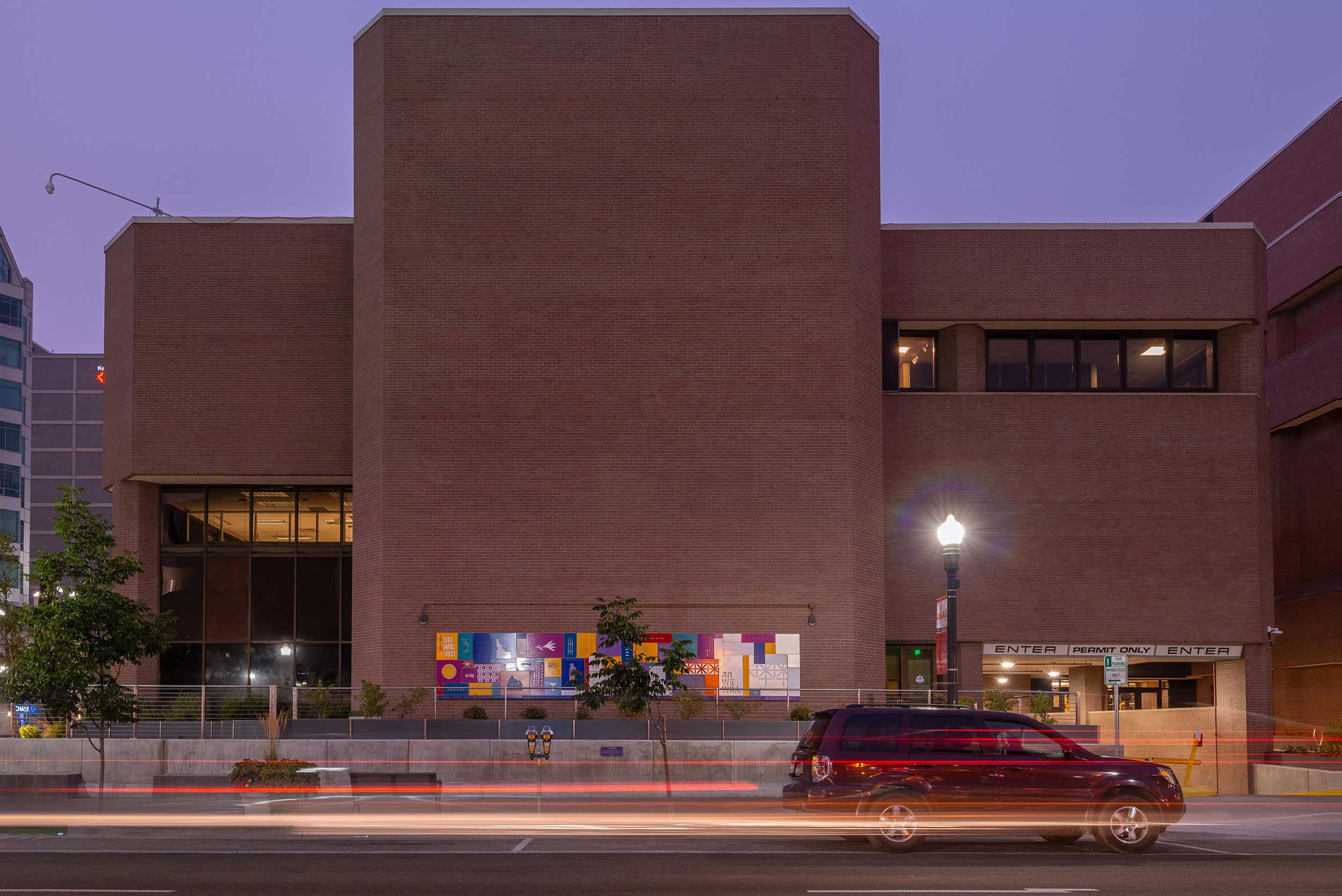Creators, Makers, & Doers: Suffrage Quilt
Posted on 8/25/20 by Brooke Burton
Interview & Photography by Brooke Burton © Boise City Department of Arts & History
Suffrage Quilt is a new public artwork designed by Stephanie Inman, supported by the research of historian Brandi Burns, and fabricated by Trademark Design and Fabrication. It commemorates the anniversary of women’s suffrage as it emerged nationally and for the state of Idaho. We dove into the stories behind the symbols (check out the coloring sheet!) and got a sneak peek at Stephanie’s new studio space (see her old one here). Together, Brandi and Stephanie spoke with women leaders in the community, weaving individual voices into the holistic fabric that makes up Suffrage Quilt.
Stephanie Inman (L), Brandi Burns (R)
Stephanie, can you describe the artwork, and where we can see it?
INMAN: Suffrage Quilt is located on the south side of City Hall, on Main Street and Capitol Boulevard. It’s 26 feet long, made of aluminum.
It’s very colorful. There are all these different symbols inspired by—
BURNS: It all references women’s suffrage history.
Tell me about your hashtag.
INMAN: We talked early on about all of the amazing successes women have achieved, and it’s wonderful to celebrate that, but the idea is there’s more work to be done. Our original hashtag was #SoWeDid. We spoke with Councilwoman Lisa Sánchez, who wanted to bring it into the present and future tense. Together we came up with “So we did, so we are, so we will.”
Why a quilt?
Inman: Quilting is traditionally women’s work. We also wanted it to look unfinished; you can see the appearance that stitches are incomplete or missing or unraveling. It reads chronologically left to right, and at the far right end, the surface is unfinished aluminum. The quilt is unfinished because the work is unfinished.
That’s to illustrate suffrage and human rights as works in progress?
INMAN: Yeah. So, in the artwork you can see references to local historic figures as well as those in the national story. There’s a timeline below the artwork to explain each reference.
Brandi, where does Idaho fit in the story of women’s right to vote?
BURNS: The West was an early adopter of women’s suffrage. Wyoming came first in 1869. They were a territory then so people said it was a joke or that they were doing it just to attract more women.
A ploy to get female bodies to the West?
BURNS: There were a lot of men in Wyoming at the time. Idaho formed as a territory in 1863, during the Civil War. The first suffrage bill here was proposed in 1870 by a representative from Oneida County named Joseph William Morgan. And they debated it. He used arguments seen at the national level; you know, that women had an inherent right to vote, that the government gets its right to govern by the consent of all individuals. That women pay taxes and deserve a say in the law.
What were the counterarguments?
BURNS: On the other side, people argued it would ruin families; that women are properly represented by their husbands. Well, not all women were married, so there were a lot of problems with those arguments. Despite that, the vote came to a tie, 11‑to‑11. Because of that, it was defeated and we did not have women’s suffrage in 1870.
We could have been the third territory! It was so close, one vote away.
BURNS: So close.
INMAN: One thing I find interesting is all the other issues intertwined with suffrage, like the temperance movement.
What’s temperance?
INMAN: So, some people didn’t want alcohol [to be legal], and the opposition thought, “Well, if we give women the right to vote, they’re all going to vote against alcohol, so we don’t want that.”
The thought was, if women vote, there will be a prohibition of alcohol.
BURNS: Yes. We have a symbol of Boise’s temperance fountain, named the Tolles Fountain, for Mary Tolles. She, her husband, and family came to Boise early on. She was a temperance supporter and had the idea to put barrels of ice water at busy intersections downtown so people could get a drink of water instead of having to go into a saloon and, potentially, you know, become inebriated. They dedicated the fountain to her. This all came later, 1910.
There were a few more attempts, but full suffrage was still out of reach?
BURNS: There were some laws passed that increased women’s property rights and allowed them to vote in school elections. We didn’t actually have full suffrage until 1896, with an amendment to our state constitution. Idaho women were voting for president in 1896.
Were there some restrictions?
BURNS: Yes, our story is pretty typical of other western states. While the Fifteenth Amendment was added to our national Constitution, which secured Black men’s right to vote in 1870, (150th Anniversary this year!) there were a lot of anti‑Chinese immigration laws that prohibited Chinese people from owning property and becoming citizens. On the national front, which applied here, Asian Americans could not become citizens until the Magnuson Act of 1943. For Idaho’s Indigenous population, it was the same thing, they were not eligible for citizenship.
If you cannot be a citizen, you cannot vote.
BURNS: Yeah. Another examples of voter suppression was the Idaho Test Oath- that you had to swear, before you could vote, that you were not a polygamist or part of an organization that encouraged polygamy. It was really targeted towards members of The Church of Jesus Christ of Latter‑day Saints, of which there was a large population in eastern Idaho. It disenfranchised LDS men and women.
I’m sure it did. That sounds like another story. I see a jail here, or is that prison?
BURNS: That’s about Alice Paul. She’s a national leader, she formed the National Woman’s Party.
INMAN: Alice Paul dedicated her life to championing women and their rights. Her tactics became too radical for the National American Woman Suffrage Association, so she formed a new organization, the National Woman’s Party. She was jailed and force‑fed after picketing at the White House. Her “jailed for freedom” pins became symbols of courage.
BURNS: By the time we get to Alice Paul in the 19‑teens, the national suffrage amendment movement had kind of stalled, she is considered radical because she fought really hard for the national amendment; she abandoned the state-by-state efforts.
She had bigger fish to fry, so to speak.
BURNS: I think her first most notable event was a parade in Washington, DC, 1913, on the eve of President Wilson’s inauguration. They just filled the streets. The women were attacked, control was lost.
It got messy?
BURNS: It got messy, but it reinvigorated the movement.
I see this building, the old city hall, and what’s this little gate?
BURNS: This represents Minnie Priest Dunton, a lecturer on women’s rights in the 19‑teens in Boise. Her husband died really early, so she had to support herself. She fought for the ability of women to support themselves and their families. Part of her story is how she remodeled her home on Hayes street to take on boarders once she was a widow. Another way she supporter herself was through lectures.
INMAN: An important factor at the time was letter writing; so we incorporated a replication of the handwriting of Eunice Pond Athey.
BURNS: Eunice was the secretary of the Idaho Equal Suffrage Association. She handled pretty much all the incoming and outgoing letters of that association, which could include, letters from other associations in other states, you know, asking, “What are you doing in your campaign?” and “How is it going?” and communication with the national association. After the state passed our amendment, she continued to answer and field requests from other states.
Was she kind of like Twitter? (Laughter.)
Yeah. What’s sad is that all we have is her handwriting, we don’t have a picture or anything.
It sounds like you sourced information from many women here in the community?
Inman: We did. We spoke with Louise E. Dixey, Cultural Resources Director of the Language & Cultural Preservation Department about Indigenous women’s contributions. Together we eventually centered on representing the practice of nourishing their people with plants: wild carrots, camas, and bitterroot. And that’s what you see here.
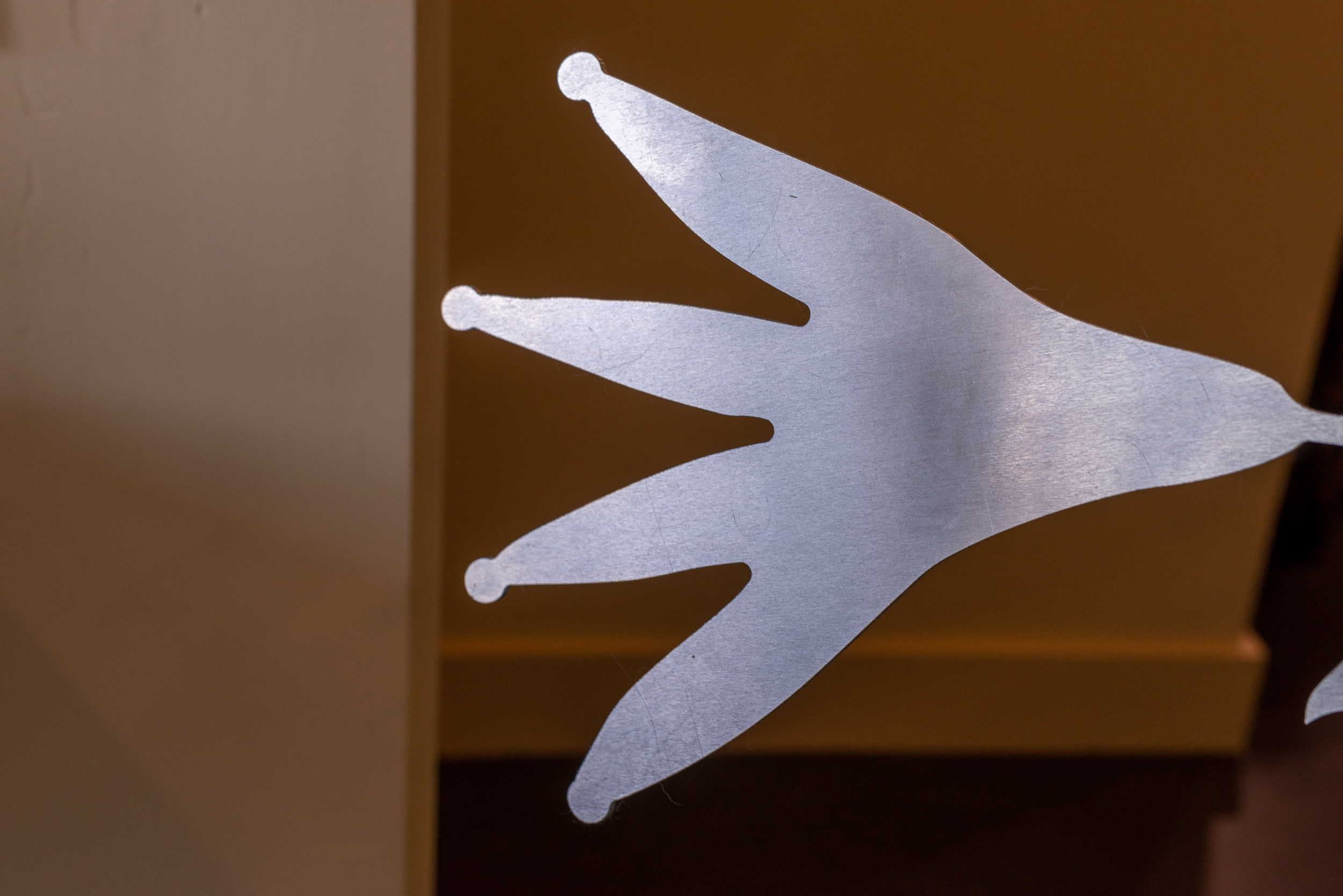 It sounds like you made an effort to weave many voices into the artwork.
It sounds like you made an effort to weave many voices into the artwork.
BURNS: We also talked with Ana Maria Schachtell, a key contributor to the founding of the Hispanic Cultural Center in Nampa.
INMAN: That resulted in our inclusion of Dolores Huerta, here with the bull horn— and the Spanish phrase “Su voto es su voz,” which translates to, “Your vote is your voice.” She popularized the phrase, “Sí, se puede,” or “Yes, you can.” There are a lot of ways that can be translated. She’s a national figure for farmworkers rights.
BURNS: She helped found the United Farm Workers with César Chávez. But you hardly ever hear about Huerta. You hear about Chávez.
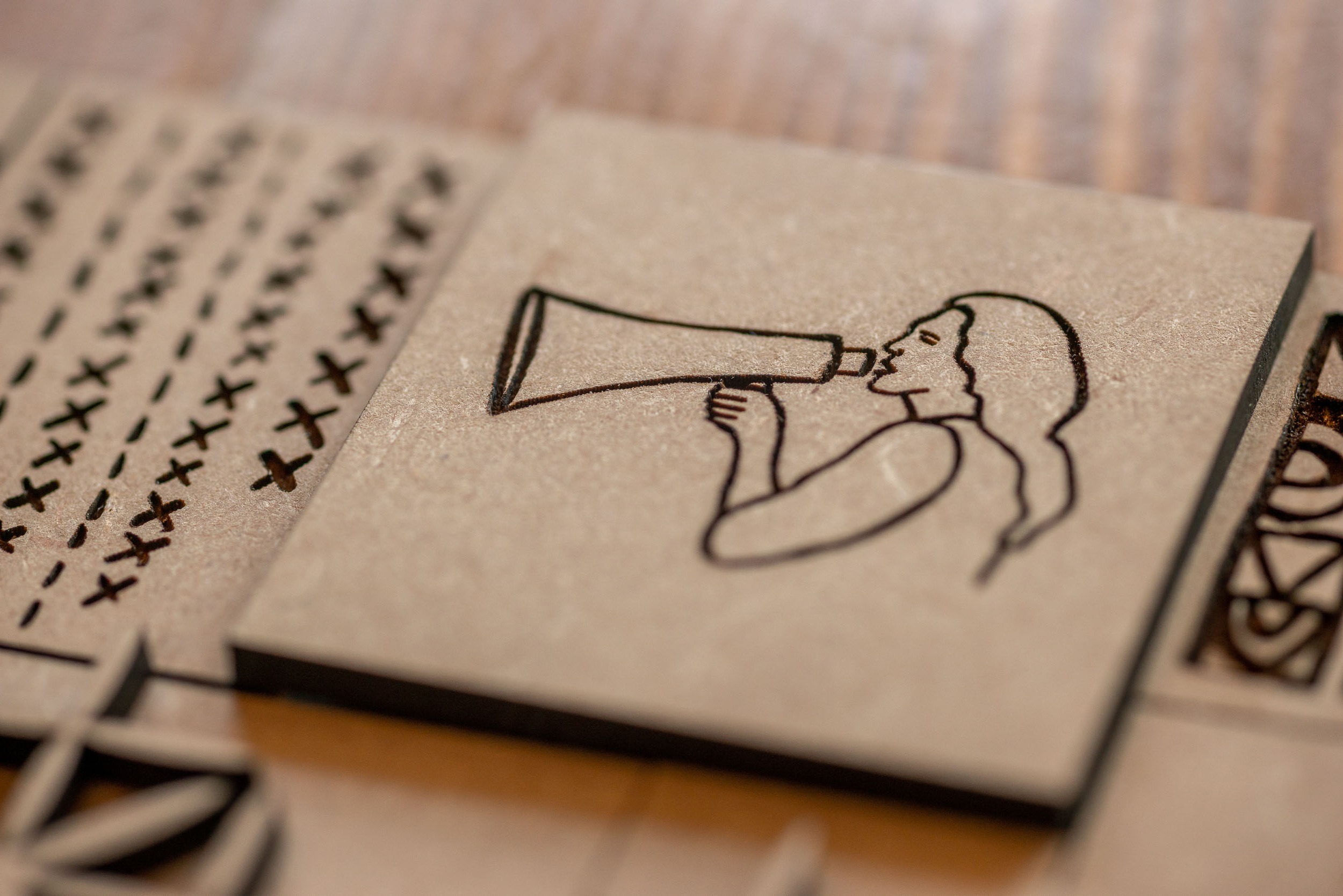 Out of all the people represented in the quilt, who would you like to meet?
Out of all the people represented in the quilt, who would you like to meet?
INMAN: Emma Edwards Green who designed our state seal, the only one designed by a woman. And I’d love to talk to Dolores Huerta, that would be fascinating.
BURNS: Dolores Huerta is still alive, she’s in her late 80s or early 90s. I think I’d like to go back and meet Eunice Pond Athey and get a picture of her. [Laughter] I think she is an unsung hero of the suffrage movement. I would love to find out how much work she really did to get women’s suffrage here.
I’m sure there are many, but what kinds of problems do you run into as an historian?
BURNS: One of the biggest problems is that women don’t have their own name in history. They’re always Mrs. George Smith or Mrs. John Doe, you have to dig extra deep, take extra steps to find women. You’ve got to research a man first, or find them on a census record, anything that lists her first name.
So if you want to know about a woman in history, you’ve got to go through her father, brother, uncle, spouse?
INMAN: Or son.
BURNS: Yep. If you’re lucky, you’ll find her full name listed somewhere. But then you’ve got to figure out her maiden name.
After all those attempts that got Idaho closer to women’s right to vote, how did it actually go down in the end?
BURNS: The women of Idaho did a short, but intense campaign to garner support for the state constitutional amendment. Idaho women used very successful tactics in educating the voting public in 1896. They went door-to-door, they targeted local newspapers to do editorials on suffrage, they had lectures from local women, regional women, and women from the East. They even asked pastors and other religious figures to do sermons in favor of suffrage.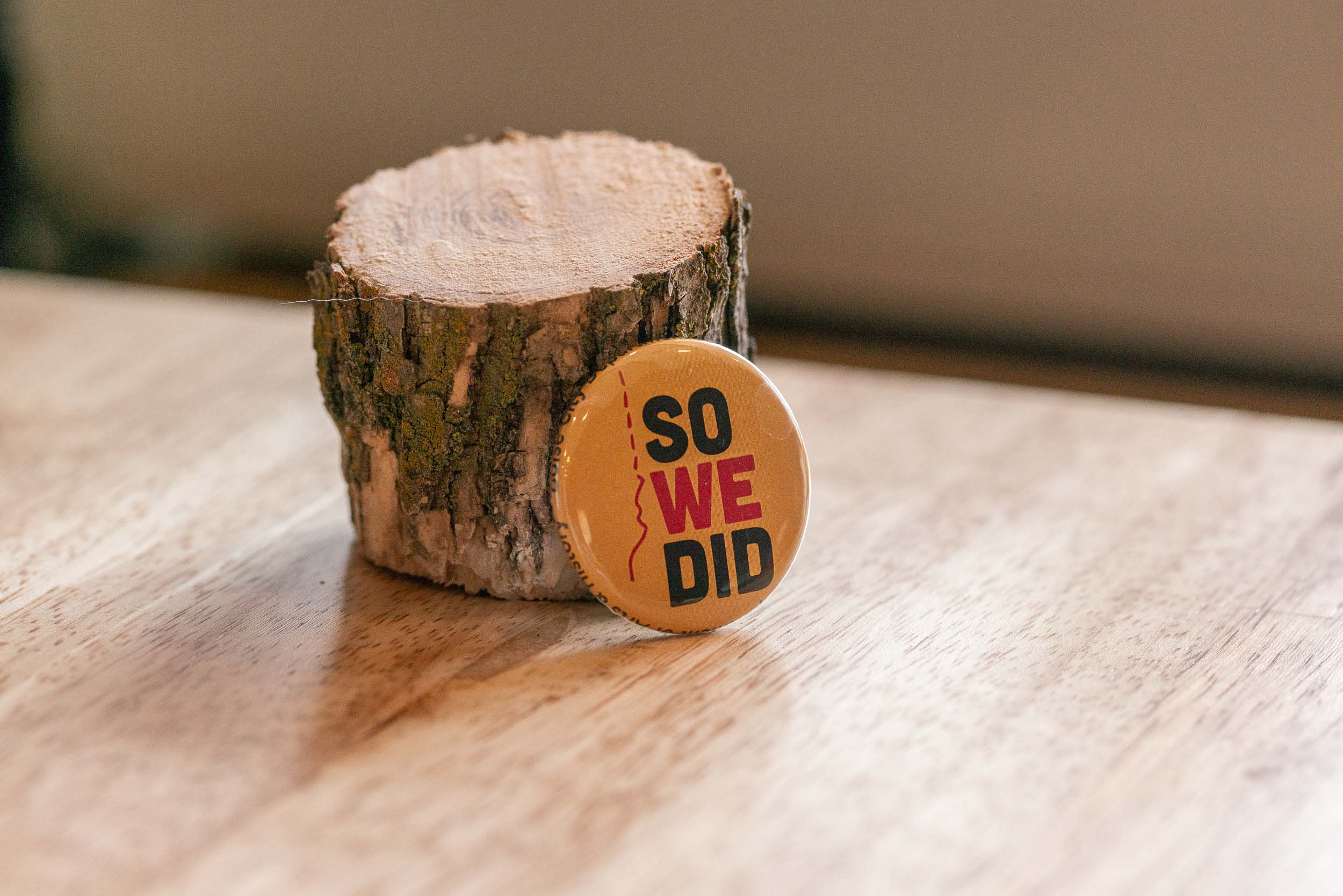
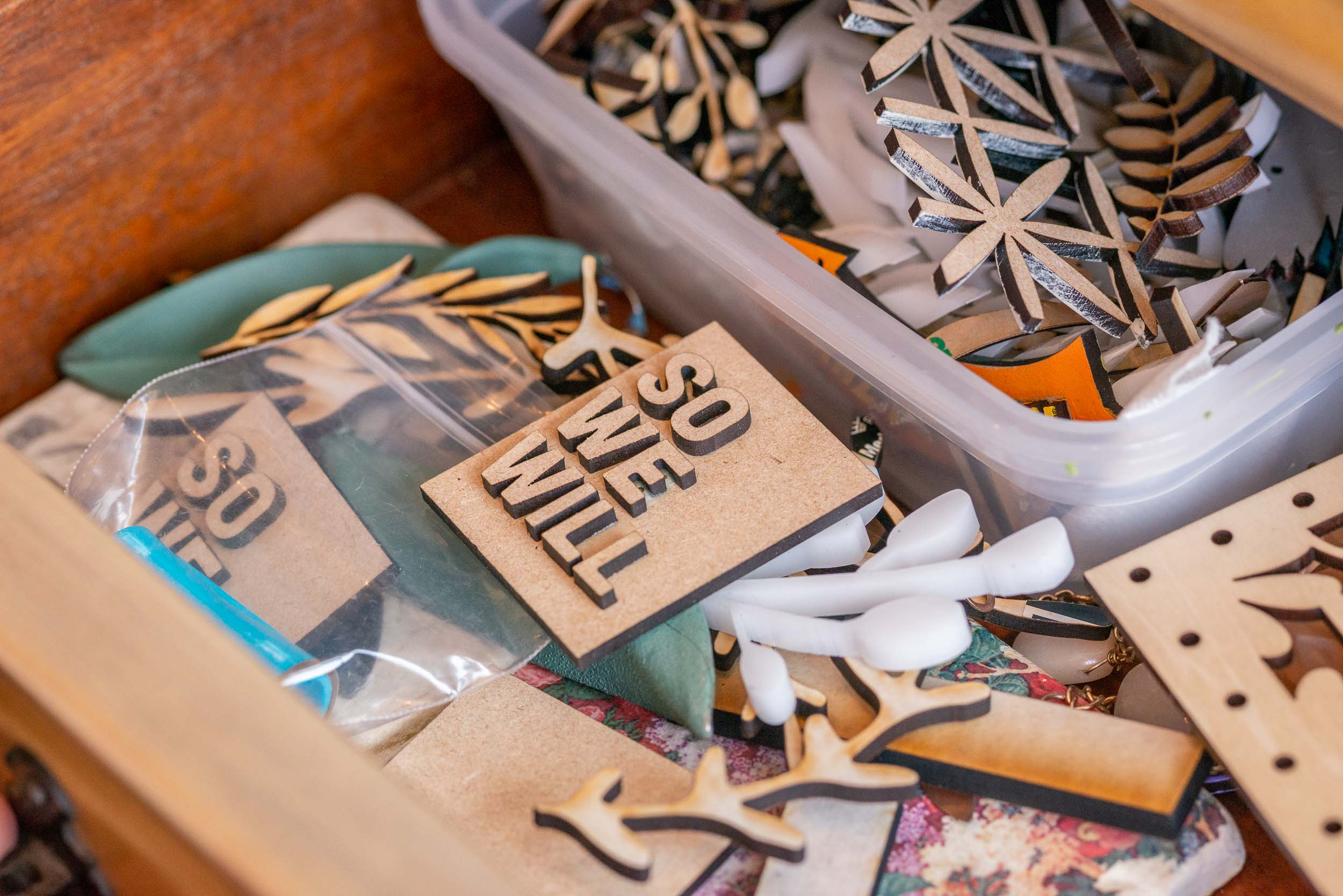
Wow! They hit it from multiple angles.
BURNS: When it came to the day of the vote, the Boise group set themselves up outside polling places with sandwiches to remind voters to remember the women.
I’m not sure why, but that brings a tear to my eye.
BURNS: When the votes were counted, success! Votes came in at 12,126 for and 6,282 against.
Yay! That’s light years away from the original 11-to-11 tie.
BURNS: Not quite. Almost immediately the State Board of Canvassers said the amendment was defeated because over a third of the total number of voters had not voted on the amendment. The board said the amendment needed 14,759 votes in order to pass.
Boo.
BURNS: But they fought back to make sure their win wasn’t taken away from them. They took the issue to the Idaho Supreme Court. In Kate Green vs. State Board of Canvassers, the Court ruled that the amendment passed.
Thank you suffragists.
Downtown Boise
August 25, 2020
This interview has been edited and condensed for clarity.
Creators, Makers, & Doers highlights the lives and work of Boise artists and creative individuals. Selected profiles focus on individuals whose work has been supported by the Boise City Dept. of Arts & History.
